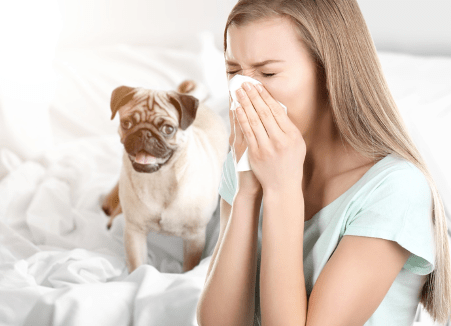Are you trying to figure out how to stop an allergy attack in its tracks? Read this article to learn more about dealing with allergies.

More than fifty million Americans are affected by allergies every year. Allergies vary greatly in their severity and their causes. And even though many people are filled with fear each time spring comes around, there are actually things you can do to stop an allergy attack.
Are you ready to say goodbye to the sneezes, sniffles, and red eyes? If so, then continue reading and we’ll walk you through everything you need to know when it comes to learning how to stop an allergy attack.
1. Police Pollen
If you’re someone who’s allergic to pollen, then you should check out the National Allergy Bureau’s website for a daily ranking of allergens. These allergens include grasses, outdoor molds, seasonal tree pollens, and weeds. When the pollen levels that you’re sensitive to are high, it’s best to stay indoors.
2. Wear a Mask
These days, masks are more fashionable than ever. And if you need to be outdoors on a day with high pollen levels, you should consider getting yourself an N95 mask. This handy little mask can help to keep the pollen out of your nose and mouth.
3. Wash Your Hair Each Night
Believe it or not, pollen can stick to your hair throughout the day. Especially if you wear a lot of hair gel or hairspray since these products can actually trap the pollen. Wash your hair to make sure that you don’t go to sleep with a head full of pollen.
4. Find Your Happy Place
People who suffer from hay fever tend to have more severe reactions the day after they perform a stressful task. This is because increased stress can lead to an increase in levels of the cortisol hormone. And these cortisol increases can lead to more severe allergic responses.
So instead of stressing out when allergy season rolls around, opt instead of some peaceful meditation or a quiet bath.
5. Keep Your Nose Clean
Think of your nose like the windshield of a car. Pollen can easily stick to it and make it dirty. Consider using a saline sinus rinse to clean your nose out.
If that doesn’t work, then go ahead and purchase a nonprescription herbal nasal spray which can help to stop allergic reactions going on in your nose.
6. Take an Antihistamine
These days, it seems that there are endless over-the-counter antihistamine options. If you can’t find one that works for you, then consult your doctor and ask them for a prescription antihistamine.
7. Try the Sprays
If antihistamines and nasal washes aren’t doing it for you, then up the ante by using a prescription steroid spray. However, you can avoid decongestants since these don’t work for allergies. In fact, they can actually worsen your congestion after several days of use.
8. Watch Out for Dust Mites
Dust mites do best in homes that are hotter than seventy degrees and have humidity levels over fifty percent. So how do you get rid of them? Keep your home cool and dry.
By keeping the temperature of your home in the low 60s, and the humidity levels around 45%, you should be able to greatly reduce the number of dust mites in your home.
You can purchase a hygrometer for your house in order to measure the humidity levels.
9. Keep Pets Out of the Bedroom
If you’re allergic to pets, then chances are that you’re allergic to the proteins that can be found in the animal’s urine, dead skin flakes (dander), and saliva. All furry pets carry these proteins. One way to relieve your symptoms is to simply keep your pets away from the areas of your home that you spend the most time in.
10. Get Rid of Your Rug
If pet allergies are becoming a serious problem, then you may want to replace your carpeting with linoleum, tile, or hardwood floors. Carpets are excellent at trapping dander and causing allergic reactions.
11. Get Your Pet Groomed
Ideally, you would have someone who is not allergic to your pet comb the animal every day, preferably outside. It’s best to use a comb that’s been dipped in distilled water as this will better trap the dander.
However, you want to skip out on the weekly baths. Baths will likely dry out your pet’s skin, which will only make the dander problem even worse.
12. Bleach Moldy Spots
Indoor mold can cause some serious allergic reactions. This kind of mold does best in humid and warm climates. You also should never assume that there isn’t mold in your home simply because you can’t see it.
Mold can hide in walls, under carpets, and many other places.
One way to beat mold is by bleaching it. You can use a five percent bleach solution and a sponge or rag to get rid of most small mold problems.
However, if you’ve got a big moldy area, you should consider calling a mold-cleanup crew to take care of the problem. Mold won’t just lead to allergic reactions but can also cause respiratory infections too.
13. Use Essential Oils
There are a variety of essential oils out there that can treat various allergic symptoms. This article explains many of them in-depth. For example, did you know that lemon oil can help you breathe easier by treating sinus infections?
The Importance of Knowing How to Stop an Allergy Attack
Nobody enjoys experiencing an allergic reaction. Especially when they lead to violent sneezing and coughing fits. But by knowing how to stop an allergy attack, you’ll be able to live a more worry-free life when it comes to allergies.
Are you looking to read other helpful articles like this one? If so, then make sure to check out the rest of our blog today for more!



